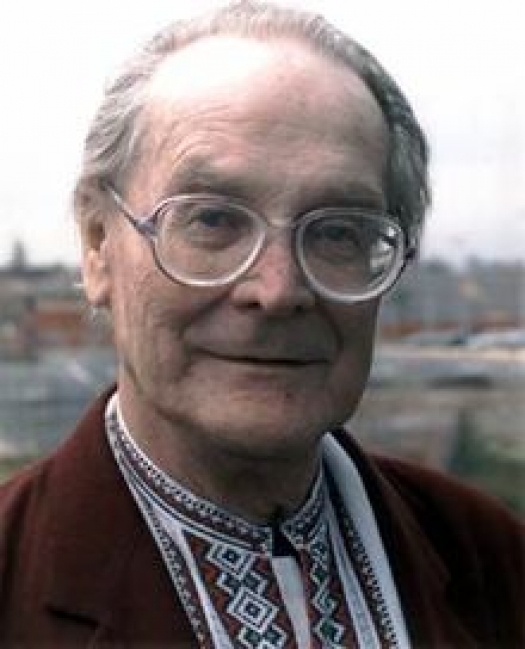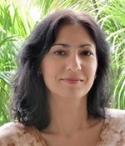konstantinpavlovichbuteyko.jpg

Konstantin Pavlovich Buteyko, MD
History
Konstantin Pavlovich Buteyko (1923-2003) was a Russian scientist and professor of medicine, who discovered the leading role of hyperventilation in the development of many chronic diseases including bronchial asthma. Doctor Buteyko received his medical degree from the First Medical Institute in Moscow, where he studied from 1946 and graduated with honors in 1952.
During the last years of his studies he observed a lot of patients with hypertension, heart disease, asthma and other serious health conditions. He noticed that with symptoms aggravation and health deterioration their respiration got heavier. It helped Buteyko (pronounced bew-TAY-ko) to realize the connection between the respiration and overall health. He then devoted his life to studying that connection.
He joined the department of clinical therapy at the First Medical Institute in Moscow as the manager of the Laboratory of Functional Diagnostics. In 1960 Dr. Buteyko became the manager of another Laboratory of Functional Diagnostics organized at the Institute of Experimental Biology and Medicine in Novosibirsk, Russia, where he created a unique diagnostic complex.
K.P. Buteyko, his students and the doctors he trained in Russia were working in many clinics and hospitals across the country and collected valuable research and practical application data on the effectiveness of the Method. They had dozens of publications in medical literature in 1960s.
Despite slow acceptance from conventional medical world, the Buteyko breathing method continued to gain popularity and to spread not only in the Soviet Union but around the world. In the 1990s Buteyko's students and followers eventually brought the method to Australia, New Zealand, the United Kingdom and many other European countries. In 1983 the Buteyko breathing method was recognized by the Russian government, and in April of 1985 the Soviet Union Ministry of Health released a regulation to recommend teaching the method to asthma patients.
From 1995 to 2006 a number of medical trials confirmed the effectiveness of the Buteyko breathing method. In June, 2002 there were debates about the Buteyko breathing method. In 2007 the Mayo Clinic listed the Buteyko breathing technique among the most promising alternative therapies for asthma. In 2008 one of the major medical insurance companies in Ireland, VIVAS Health offered Buteyko workshops coverage as a members benefit. In 2008, The British Thoracic Society in their Guideline on the Management of Asthma upgraded Buteyko breathing technique to category B, meaning that there are high quality clinical trials supporting the effectiveness of the method in reducing asthma symptoms and bronchodilator use. In April of 2009 Coventry University in the United Kingdom offered a course to train nurses how to teach the Buteyko breathing method to patients with asthma.
Short summary of the theory
Hypothesis and Main Postulates
- Most patients with a variety of modern chronic health problems (degenerative diseases or "diseases of civilization") chronically hyperventilate. They continuously breathe volumes of air, which are significantly above normal minute ventilation volume (3-6 l/min).
- The most harmful physiological effect of hyperventilation is a loss of carbon dioxide (CO2) in the lungs
- Loss of CO2 causes a number of negative physiological effects, e.g. shift in PH balance, constriction of blood vessels and smooth muscles, and poor tissue oxygenation (Bohr Effect).
- Continuing hyperventilation and loss of CO2 leads to the development of the disease and its further progression.
- Which condition your body acquires might be influenced by your genetic predisposition and the environment.
- Severity of the disease is proportional to the degree of hyperventilation.
- Factors that contribute to over-breathing are mostly rooted in our modern lifestyle, e.g. unhealthy diet, lack of physical exercise, stress, toxins, medications over-use, belief that deep (big) breathing is good for you and so on.
- Restoration of normal breathing leads to elimination of symptoms and reversal of the disease
Practical application
The goal of practical application of the method is to reverse chronic hyperventilation and restore healthy breathing pattern. Buteyko practice is essentially a gradual breathing retraining program, which allows patients to experience fewer symptoms and significantly reduce or eliminate medications. Reversal of the condition is the goal, but success largely depends on a student's perseverance.
Western practitioners work mostly with patients with asthma and other chronic respiratory conditions, because those diseases were proven to be the most responsive to the Buteyko treatment. However, since more doctors now are recognizing a diagnosis of chronic hyperventilation, more people are seeking the Buteyko treatment also for this and related disorders (e.g. anxiety, panic attacks, depression, chest pains and heart palpitation without underlying heart conditions, psychosomatic ”fat folder” disorders and others).
With more research and clinical trials Buteyko therapy has a potential to be used for a wide variety of conditions. It is an excellent tool for preventive health, immune system strengthening and post stress/trauma recovery (e. g. post chemotherapy, surgery, post traumatic stress disorder (PTSD)). It has also been used successfully for improving athletic performance and increasing endurance in high demand aerobic sports activities.
Years of experience of western practitioners show that with a correct application Buteyko therapy can considerably reduce symptoms and dependency on medication, and in many cases to completely reverse the condition.
Best practices of the Buteyko therapists in the west usually include a series of workshops where students learn to apply the Buteyko breathing technique. They also include a theory introduction as well as lifestyle guidelines. The practitioner's role is to make sure a patient fully understands the theory behind the method, can correctly measure his progress and is able to practice breathing exercises in the most efficient way according to his age, history of the disease, other health conditions etc.
Recognition Facts
The method is not widely known in the United States, but has received considerable recognition in Europe, Russia, Australia and New Zealand.
- The Buteyko method has seven published independent medical trials, showing its undeniable effectiveness.
- Average trial results show 75 percent fewer symptoms, 90 percent reduction in reliever medication use and 49 percent reduction in preventer medication use just after three months.
- The Buteyko method is used along with conventional asthma treatment in some clinics and hospitals in Europe, Russia and Australia.
- In 2008, The British Thoracic Society in Guideline on the Management of Asthma upgraded the Buteyko breathing technique to category B, meaning that there are high quality clinical trials supporting the effectiveness of the method in reducing asthma symptoms and bronchodilator use.
- The Buteyko method is offered by some health insurance companies in Europe as a member benefit.
- Mayo Clinic (Rochester, Minnesota) listed the Buteyko breathing technique among the most promising alternative asthma treatments.
- Coventry University in the United Kingdom offers a course to train nurses how to teach the Buteyko breathing method to patients with asthma.
- In Glasgow, Scotland, the Buteyko breathing method is included in the curriculum of 10 local schools.
Safety and Benefits
The Buteyko method is safe for any age and disease severity, and does not include the use of any drugs, supplements or devices. The only optional cost is a practitioner fee, which averages around the cost of just one month supply of commonly prescribed in the United States preventive combination inhalers (example – Advair). Considering that most moderate to severe asthmatics continuously use a number of medications, nebulizers, peak flow meters etc., and asthma is among the top 10 emergency department diagnoses for children, there is little doubt that Buteyko therapy could significantly reduce costs for patients, medical insurance providers and save taxpayers' money directed at government subsidized healthcare.
References and Resources
Asthma in the United States: according to the statistics published on American Academy of Allergy, Asthma & Immunology site
- Asthma and allergies strike one out of four Americans.
- Approximately 20 million Americans have asthma.
- Nine million United States children under 18 have been diagnosed with asthma.
- The prevalence of asthma increased 75 percent from 1980-1994.
- Asthma rates in children under the age of five have increased more than 160 percent from 1980-1994.
- In 2004, there were 13.6 million physician office visits and one million outpatient department visits due to asthma.
- Asthma accounts for 25 percent of all emergency room visits in the United States each year with two million emergency room visits in 2001.
- Direct health care costs for asthma in the United States total more than $10 billion annually; indirect costs (lost productivity) add another $8 billion for a total of $18 billion.
- There are approximately 5,000 deaths from asthma annually.
Studies of hyperventilation
- "Hyperventilation Syndrome" from eMedicine Emergency Medicine
- "Breathing exercises for asthma: panacea or placebo?" in Pearson Thorax, 2007; 62: 1033-1034 (registration required)
- "Can you diagnose hyperventilation?" in Chronic Respiratory Disease, 2006; 3; 113
- "Hyperventilation" in American Journal of Respiratory and Critical Care Medicine Vol 170. pp. 105-106, (2004)
- "Ventilatory Responses to Inhaled Carbon Dioxide, Hypoxia, and Exercise in Idiopathic Hyperventilation" in American Journal of Respiratory and Critical Care Medicine, Vol 170. pp. 118-125, (2004)
- Biographical Memoirs V.74, National Academy of Sciences
- "Hyperventilation Syndrome: A Diagnosis Begging for Recognition" in Topics in Primary CareMedicine
Buteyko Clinical Trials
Contact
Buteyko AsthmaCare is a program offered by Buteyko Clinic USA, LLC based in Minneapolis - St Paul, Minnesota.


